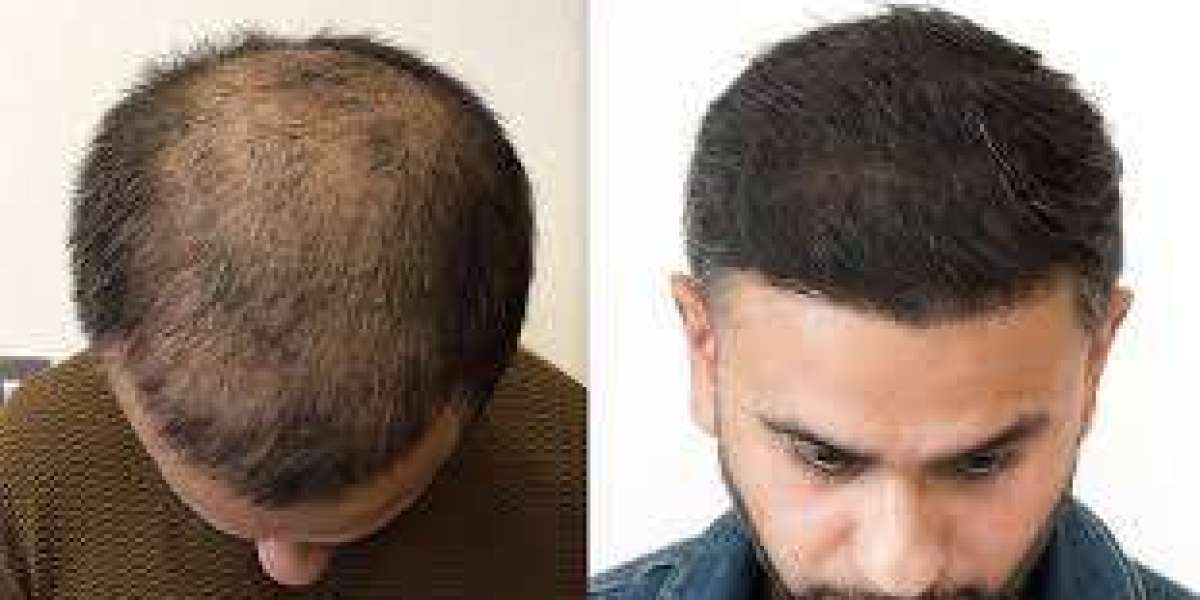When you hear the term "hair transplants," you may recall the uneven, obvious hair plugs of old. However, hair transplantation has evolved over the last decade. Hair transplantation, also known as hair restoration, is an outpatient treatment that uses micrografting technology to transfer hair follicles to thinning areas of the scalp.
The results of a hair transplant are noticeable and believed to be permanent. The operation is also time-consuming, requiring a period of healing and rehabilitation. Because of these variables, those who have already suffered severe thinning of their scalp hair are the best candidates for a hair transplant.
Although hair removal products, which have dangerous side effects and rarely work, continue to disappoint people who want to avoid hair loss, hair transplantation is now well-known and favored. Hair transplant procedures, such as alopecia hair transplants, are increasingly attracting the interest of men seeking hair restoration. However, it is natural that some people are unsure whether or not the hair transplant is permanent.
After transplanting hair follicles into thinning areas, your skin takes time to repair. The treatment often causes hair loss within three months. Healing times can vary from 6 to 18 months. However, once the healing process is complete, the transplanted follicles begin to produce hair, filling in the bald places on your scalp. This is the hair that will naturally grow as you age.
Hair transplantation entails transplanting hair from the donor area, which is located in the back of the head and is genetically resistant to hair loss. Because of this place's genetic makeup, the hair can continue to grow in its new home. As a result, the transplanted hair usually stays on the scalp for life. The transplanted hair may get finer with age, but it will not fall off. Experts anticipate an extremely high success rate in hair transplantation, with 95 percent of transplants being permanent. However, if you use hair other than the back of the head, like body hair, it may fall out due to its lack of genetic protection.
"Modern" hair transplantation methods are now in use. Using small punctures, Follicular Unit Extraction (FUE) transplants follicles from all over your head to regions where your hair is thinning or bald.
What causes hair loss following a hair transplant?
Individuals suffering from long-term hair loss may find relief in the form of a hair transplant operation. This surgical treatment, widely viewed as a permanent remedy, typically takes hair follicles from a donor site, typically located in the posterior region of the cranium, and then transplants them to an area experiencing hair thinning or baldness. We trust the region for hair transplantation because it is genetically resistant to the hormone that causes both male and female pattern baldness. Transplanted hair follicles typically maintain their robustness and continue to grow throughout the recipient's lifetime. If you undergo a hair transplantation procedure, the newly transplanted hair is likely to last forever. While the transplanted hair is resistant to shedding, the surrounding hair may gradually shrink over time. As a result, additional procedures or care may be required to maintain the look of a full mane.
Adhering to a healthy lifestyle and following your surgeon's post-operative care advice will help extend the life of your hair transplant. Certain people may choose a secondary transplant operation if they experience further hair loss or want to achieve a more voluminous appearance. Regular consultation with your hair transplantation specialist is critical for assessing the transplanted hair's progress and determining whether any additional treatments are required.
At what point is a hair transplant considered complete?
Hair transplantation is not a quick fix; rather, it produces observable results gradually. After the initial surgical surgery, the transplanted hair may take many months to fully mature and achieve the desired results. The time necessary for visible hair regrowth after surgery varies by individual, but it normally ranges from 6 to 12 months. The amount of hair loss, the quantity of grafts implanted, and the natural rate at which an individual's hair grows are only a few of the elements that may influence the conclusion of "completeness" in a hair transplantation process. As a result, those seeking medical treatment must be calm about the time it will take to see positive results.
The patient's expectations are a major factor in evaluating whether or not the surgery was effective. Some individuals may be satisfied with the outcomes of a single procedure, while others may prefer to have many surgeries to improve hair density or shift the location of their hairline. As a result, the term "completion" can be interpreted in a variety of ways, and patients are encouraged to consult with their surgeon to assess their progress and discuss any additional care or revisions that may be required to achieve their desired cosmetic outcome. Follow-up consultations with the transplant surgeon allow for monitoring and fine-tuning transplant outcomes.
You won't be able to see the results immediately after your hair transplant procedure. For the first few months, you may notice that you are losing more hair as the transplanted portions mend. Because transplanted hair typically breaks at first, As a result, some people get a second hair transplant. Patients who have had hair transplants should follow their doctor's instructions about sprays, shampoos, and medications. Failure to adhere to the doctor's pre- and post-operative instructions may have a detrimental impact on the outcome of the surgery. A hair transplant specialist with experience and training should perform the procedure for those seeking one.
Contact our experts at Alborj Hair Clinic, one of the top clinic of hair transplant in Dubai. We can help you with any hair transplant related questions and provide information about your journey. You can work with our professionals to choose the best course for your transplant. If you have any questions, please contact us via our website to learn more about the FUE procedure.
Book a free appointment with our skilled medical team to learn more about hair transplantation procedures and prices.



